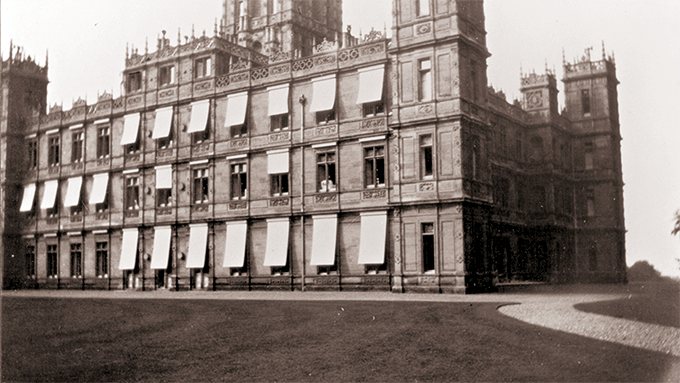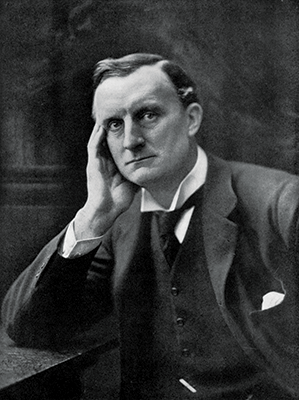We take a poignant look at the lead up to WWI and the role of stately homes, such as Highclere Castle, in the war effort.

The weather during June and July 1914 had the makings of a typical British summer. June was generally bright and dry; July was more unsettled, but still warm. Yet all the while, storm clouds had been gathering on the horizon – slowly, menacingly and inexorably rolling towards Britain…
For some time, a cauldron of discontent had been bubbling across Europe. The tension between the declining Turkish and Austro-Hungarian empires, and the evolving powers of Germany and Russia was growing daily. But it was the events in Sarajevo, Bosnia, on 28 June 1914 that tipped the cauldron over, simultaneously priming a time bomb whose fuse proved to be inextinguishable.
On that day, it took one man – a Bosnian-Serb by the name of Gavrilo Princip – just two bullets to assassinate Archduke Franz Ferdinand (heir to the throne of Austria-Hungary) and his wife in the Bosnian city of Sarajevo. And, while historians are generally of one mind that no single event caused the war, they are also generally agreed that this was one of the most significant.

Back home Britons went about their usual summer business – aristocracy and the working-classes alike. Grand garden parties were held in stately homes, picnics were taken in the country and the masses indulged in the newfound pleasures of a day at the seaside. The governments of Europe, meanwhile, busied themselves with more serious affairs.

Threats, counter-threats and demands were rife. Deadlines were set. Deadlines passed. Britain, it seemed, was slowly but surely being sucked into the spiralling vortex of war, although in that respect the Cabinet was far from united. Edward Grey, the Foreign Secretary, asserted that the situation could be resolved by diplomacy.
Anyway, Britain, he claimed, had no commitments; what he called “obligations of honour”. It was a stance he maintained until 3 August, the very eve of war when he addressed Parliament. Afterwards, he remarked to a friend that, “The lamps are going out all over Europe; we shall not see them lit again in our lifetime.” And so, when Germany invaded Belgium, it was Britain’s obligation of honour (by means of treaty) to the latter that led to war being declared as Big Ben chimed midnight on 4 August.
Britain wasn’t exactly unprepared. Winston Churchill had mobilised the naval fleet on 2 August and Prime Minister Asquith gave orders to the army on 3 August. The weather had turned wet and unsettled during those first few days of August, the public at large probably accepting war as an inevitable but, rather like the weather, inconvenient reality. Anyhow, there was a general consensus that it would “all be over by Christmas” – portentously a view not shared by Asquith.
Sadly Grey’s optimism about the outcome of war was not to be realised. Soon the death toll became inconceivable, and thousands upon thousands of injured soldiers were being sent home. And that wasn’t all – on 16 December 1914, Hartlepool became the first place to be raided on British soil.
Hospital capacity rapidly became inadequate. Anxious to ‘do their bit’, the gentry offered their properties as hospitals and convalescent homes, with many also requisitioned. In September 1914, Highclere Castle (the setting for television’s Downton Abbey), was one of the first to receive the injured; Lady Almina, the Countess of Caernarvon, who lived at the castle during the war years and who shares many qualities with the character Lady Cora in Downton, even served as a nurse.

The Georgian house of Dunham Massey in Cheshire, meanwhile, became a 300-bed military hospital after being made available by its owner, Lady Stamford. Her daughter, Lady Jane Grey, was a nurse there.
Wrest Park, the château-style house in Bedfordshire, home to the De Grey family, also became a military hospital, as did Harewood House in West Yorkshire. Great Dixter in East Sussex performed a similar role, while Brighton’s Royal Pavilion was used principally for Indian soldiers who, it was thought at the time, would feel more at home amid its oriental surroundings. At Stourhead, in Wiltshire, Lady Hoare busied herself visiting injured servicemen in local hospitals, throwing the estate open to the more able-bodied for day visits.
When injured troops were repatriated, more were ferried out to replace them, with Folkestone the main departure point. Some 10 million Channel passages originated from the town, although rather tellingly there were 2 million fewer in the return direction.
For our full feature on Britain’s role in the war and the Home Front see the July/August 2014 issue of BRITAIN magazine.
Related articlesSea of poppies at the Tower of London |
Click here to subscribe! |
|
|||||||||||||||||







 © 2024
© 2024